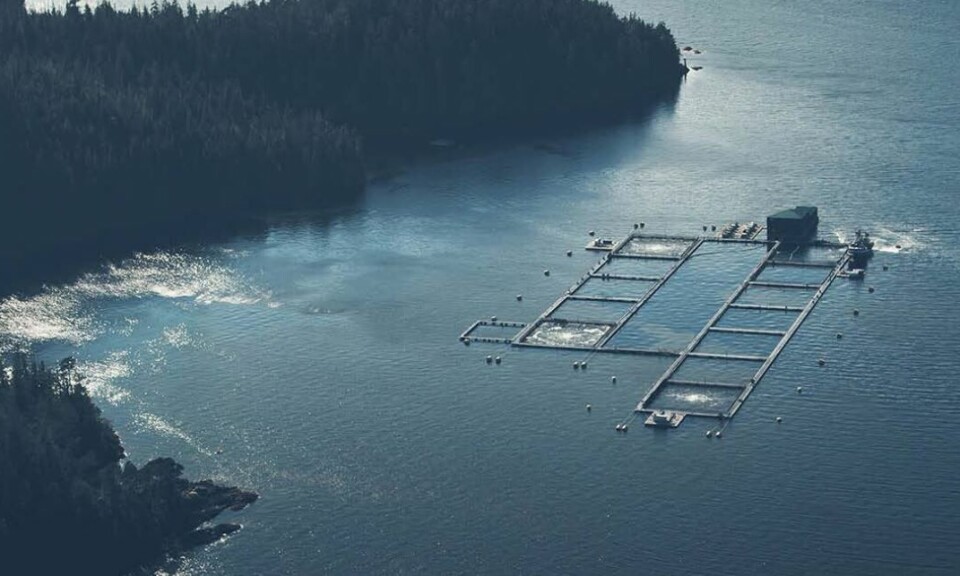
Challenging quarter for Grieg Seafood
Salmon farmer hit by low oxygen and political uncertainty in Canada, and Spiro in Norway
Norway and Canada salmon farmer Grieg Seafood has reported an operating loss of NOK -35 million (Can -$4.53m) for the second quarter of 2024. Grieg’s harvest volume in Q2 was 15,272 gutted weight tonnes, down from 22,645 gwt in Q2 2023.
The operating loss, which contrasts with an operating profit of NOK 547m in the same period last year, was due to negative results in Canada, and Finnmark, Norway.
In British Columbia, western Canada, operations were severely impacted by what Grieg said were the lowest dissolved oxygen (DO) levels experienced in decades, and algal blooms, causing increased mortality rates, loss of feeding days and reduced growth. Operational EBIT per kilo was NOK -4.9 (Q2, 2023: NOK -2.5) on a harvest volume of 8,615 gwt (5,537 gwt). The harvest volume was 1,500 tonnes below guiding due to loss of biomass as a result of low DO levels.
Q3 loss expected in BC
The conditions have also adversely affected the current quarter, with an expected operating loss in BC in the range of NOK 230 and 250 million.
In addition, fish farmers in BC are still waiting for details of the federal government’s plan to transition Atlantic salmon aquaculture to closed containment and ban open net pens within five years. In the meantime, Grieg Seafood has suspended all strategic investments in the province.
"Our aim is to
land a realistic, reasonable and achievable plan. Grieg Seafood BC is currently working internally and with our First
Nations partners to ensure that if a ban on open net pens is indeed implemented by 30 June 2029, the transition plan will
make careful consideration to balance the needs of stakeholders, to ensure viability of the industry going forward," the company wrote in its Q2 report published today.
There was no harvesting from Grieg’s farms in Placentia Bay, Newfoundland, in Atlantic Canada, where volumes are being built up cautiously. Grieg NL therefore had an operating loss of NOK 8.1m.

In Finnmark, harvest volumes remained impacted by the Spiro parasite, combined with biological challenges caused by string jellyfish. Operational EBIT/kg was NOK -3.3 (NOK 25.4). On the plus side, harvesting of fish previously exposed to Spiro was completed by the end of July.
“Furthermore, combined with measures taken to improve fish-health overall, biological performance in the region is improving and costs are expected to decrease. Hence, I believe we are heading towards better times in the Finnmark region,” said Grieg chief executive Andreas Kvame.
Post-smolts perform well
In Grieg’s other Norway region, Rogaland, harvest volume for the quarter was 2,771 gwt, significantly below the 11,536 gwt harvested in the second quarter 2023, due to a strategy to build biomass. Operating EBIT/kg was NOK 19.9 (NOK 36.7).
“Earnings and farming cost in Rogaland were impacted by planned low harvest volumes. However, the underlying performance was good. Rogaland was the first region to implement our post-smolt strategy,” said Kvame. “Since implementation, we have proved that the strategy contributes to good biology and high average weight, underscoring our strong conviction that this is a key element to securing good fish health and welfare.
“Looking forward, investments in operational assets and biomass are developing according to plan. I am also pleased to say the construction of our new post-smolt facilities in Rogaland, Finnmark, and Newfoundland, in addition to the VAP (value added products) facility at Gardermoen (Oslo airport), are progressing well.”
Grieg expects to harvest 16,700 gwt in the current quarter: Rogaland: 8,500 gwt; Finnmark: 5,000 gwt; BC: 3,200 gwt. It will harvest from Newfoundland in Q4.
The company’s full-year harvest volume is expected to be 78,500 gwt distributed as follows:
- Rogaland: 28,000 gwt
- Finnmark: 27,000 gwt
- BC: 12,500 gwt
- NL: 11,000 gwt























































